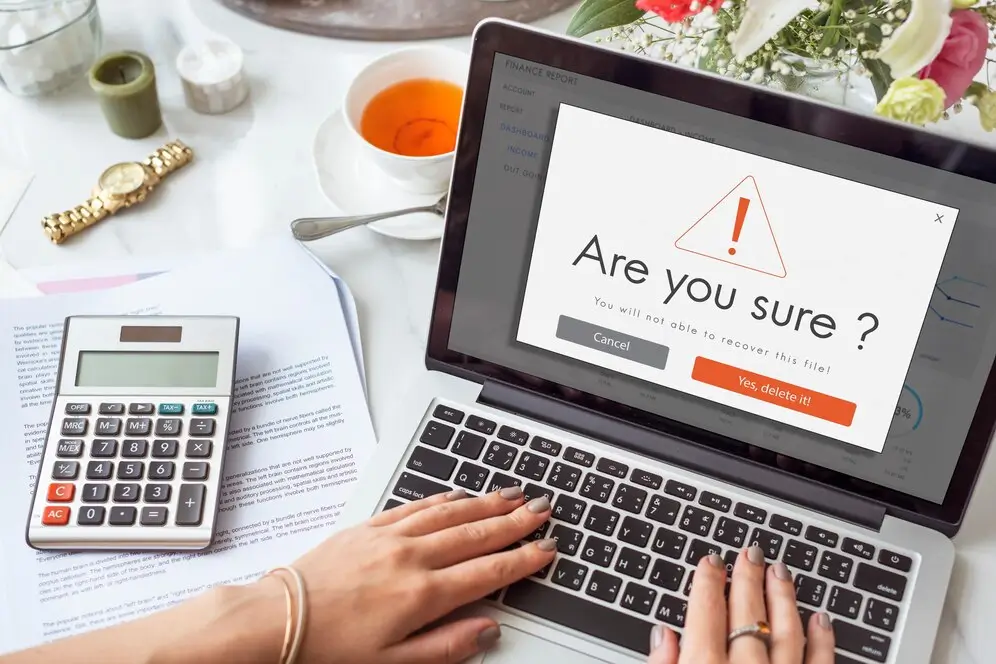The Danger of Fake Bank Sites
Fake bank sites represent one of the most serious threats to the security of users' finances on the internet. These sites are created by scammers with the aim of deceiving users and stealing their personal data, such as logins, passwords, and bank details. Often, they look like exact copies of legitimate bank sites, making them difficult to recognize for an ordinary user.
Why should you beware of fake sites?
- Theft of personal data: Data entered on such sites can be used to access your bank accounts.
- Financial losses: Scammers can use your data to make unauthorized transactions.
- Privacy threat: Personal data can be sold on the black market.
How to Recognize a Fake Bank Site
Recognizing fake sites can be a challenging task, but there are several signs that can help identify a fake.
- Check the URL:
- Real bank sites always use a secure connection (https://).
- Pay attention to spelling in the address — even small changes (such as replacing a letter or adding a number) can indicate a fake.
- Site Appearance:
- Compare the site with the original. Any discrepancies in design, logos, or colors can be a sign of a fake.
- Check the Security Certificate:
- Click on the lock icon in the browser's address bar. Check the certificate owner's information and its validity period.
- Errors in Text:
- Pay attention to grammatical errors and typos. Banks usually ensure the quality of their texts.
- Site Functionality:
- Try using various site functions. If some of them don’t work, it might be suspicious.
Signs of a Fake Bank Email
Fake bank emails can be just as dangerous as fake sites. They are often used for phishing — a method where scammers try to extract information from you by posing as official bank representatives.
What to Look for in an Email?
- Sender's Address:
- Check the sender's email address. It often might differ from the bank's official address.
- Greeting in the Email:
- Banks usually address their clients by name. Be cautious if you are referred to with general terms like "Dear Customer."
- Emotional Triggers:
- Scammers may use urgent or alarming phrases to make you act quickly.
- Links and Attachments:
- Never click on suspicious links or open attachments unless you are sure of their safety.
- Grammatical Errors:
- As with sites, errors in an email can be a sign of a fake.
Protecting Finances from Scammers
You can ensure the protection of your finances online by following a few simple recommendations.
- Use Two-Factor Authentication: This is an additional security measure that requires entering a code sent to your phone when logging into an account.
- Regularly Update Passwords: Use complex passwords and change them every few months.
- Install Antivirus Software: Modern antivirus programs can detect and block fake sites and phishing emails.
- Be Alert to Suspicious Activities: Regularly check your banking transactions and immediately report any suspicious transactions to the bank.
- Education and Awareness: Stay informed about new fraud methods and share information with loved ones.
Technical Measures for Protection
Modern technologies offer many solutions to protect against fake bank sites and emails.
- Phishing Filters:
- Many modern browsers and email clients support filters that automatically block suspicious sites and emails.
- VPN and Proxy Services:
- Use them to protect your data when working on public networks.
- Password Managers:
- They help create and store complex passwords, reducing the risk of account hacking.
Scammers and Bank Sites: How Not to Become a Victim
Scammers constantly improve their methods, and it's important to stay one step ahead.
Here are some tips on how not to become their victim:
- Do Not Provide Personal Data Over the Phone: Real banks never request such information over the phone.
- Be Cautious of Unknown Calls and Messages: If you receive a suspicious message or call, do not respond or call back the suggested numbers.
- Verify Information Through Official Channels: If you have doubts, contact the bank through their official website or phone number.
Conclusion
In today's digital world, protecting finances from scammers becomes a top priority for every user. Understanding how to recognize fake bank sites and emails can save you from financial losses and keep your personal data safe. By following the recommendations provided and staying vigilant, you can effectively counter internet threats and protect your finances from fraudsters.
